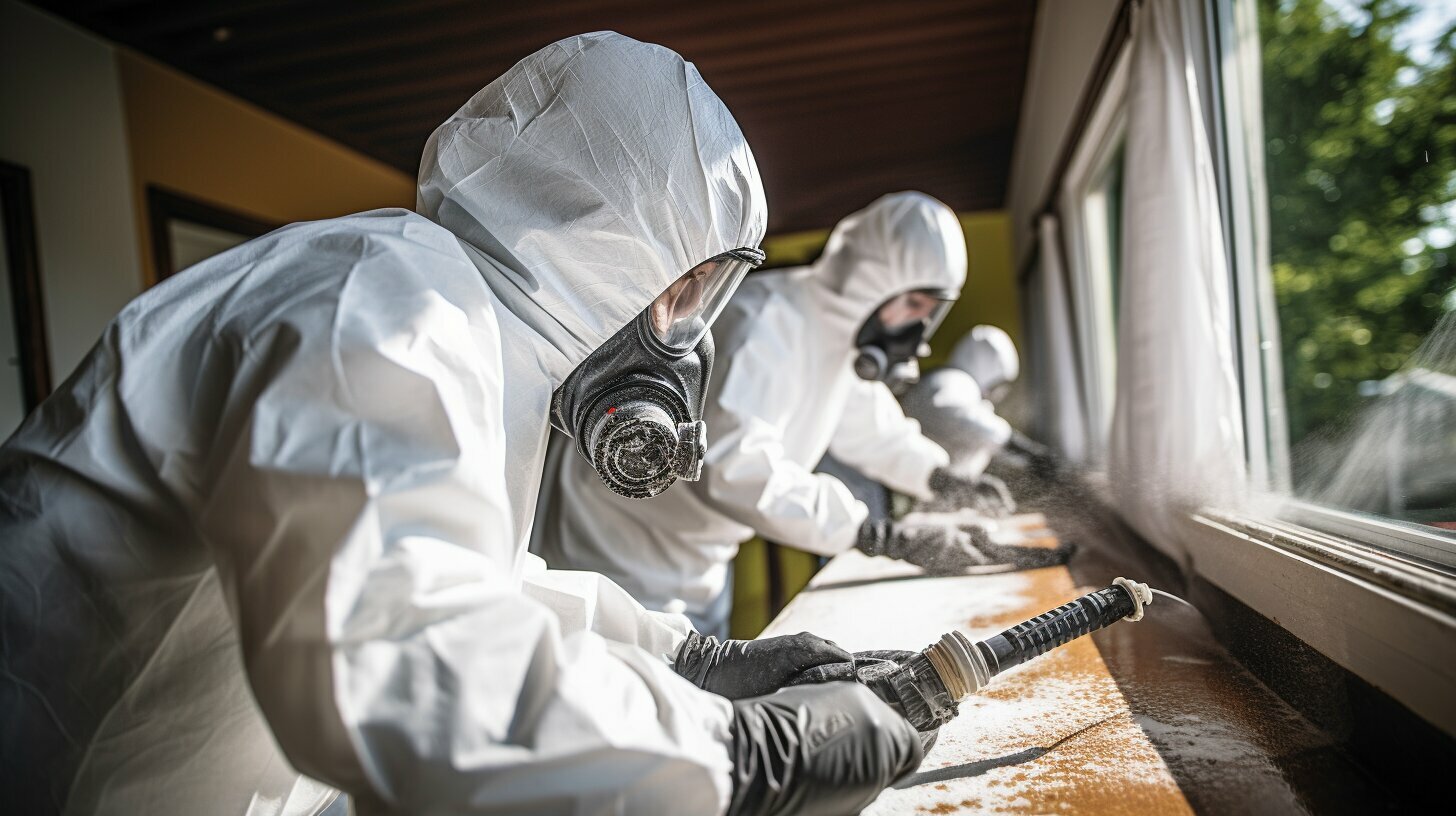Imagine buying your dream home, only to find mold hiding in the walls. Can mold really ruin a house? Mold can cause serious damage, affecting the house’s structure. This damage doesn’t just stop at the walls; it can also lower the house’s value.
Homeowners might face huge repair costs. But what does this mean for those who own or will own a home? Let’s look at cases where mold turned dream homes into financial burdens.
Understanding Mold: What is Mold?
Mold is a type of fungi that grows indoors and outdoors. It loves moist places. This includes areas with water leaks, high humidity, or condensation.
Mold can grow in many places, not just homes. It can also be found in commercial buildings.
To grow, mold needs moisture and organic materials. These can be wood, paper, drywall, or fabric. Mold spreads by releasing spores into the air. These spores can move through HVAC systems, making the problem worse.
Mold not only damages buildings but also harms indoor air quality. Bad air quality can cause breathing problems and allergies. The Environmental Protection Agency (EPA) says it’s important to fix mold problems quickly to avoid health issues.
To stop mold, we need to know what it needs to grow. This includes moisture and organic materials. Using dehumidifiers, fixing leaks, and improving ventilation can help. These steps can lower the chance of mold and improve air quality indoors.
Signs of Mold Damage in a House
Spotting mold damage in a house is key to keeping it safe and healthy. It starts with noticing visible signs and doing a thorough check. Here are the main signs to watch for:
- Water Stains: These are often the first visible signs. They appear as yellow or brown patches on walls, ceilings, or floors, indicating moisture buildup that fosters mold growth.
- Musty Odor: A persistent musty smell within certain areas of the house can strongly suggest hidden mold. These odors may be particularly noticeable in basements, bathrooms, or under carpets.
- Discoloration: Mold can cause black, green, or even pink discoloration on surfaces. This is usually seen on walls, ceilings, and even furniture, suggesting that mold spores have taken hold.
- Unexplained Surface Damage: Warped or bulging walls, peeling paint, or damaged wood are clear signs that there is a moisture problem and possibly mold.
Doing a detailed check is vital for finding hidden mold. Experts use special tools and methods to see how much mold there is. Catching it early and getting rid of it can stop big damage and keep the property’s value up.
Health Risks Associated with Mold Exposure
Being around molds can cause health problems, from mild to severe. Respiratory issues are a big concern. People might cough, wheeze, or have trouble breathing, especially if they have asthma.
Mold allergens can also cause health issues. Those allergic to mold might sneeze, have a runny nose, or get skin rashes. These symptoms can get worse and lead to serious breathing problems.
Some molds, like black mold, are especially dangerous. They release toxins that can harm your brain and weaken your immune system.
Experts from the CDC and WHO stress the need for mold removal. Doing it right can lower health risks and stop serious problems.
Can a house be ruined by mold?
Mold can indeed cause significant damage to a home, sometimes to the point of rendering it uninhabitable. Mold thrives in damp and humid environments, feeding on organic materials such as wood, drywall, and insulation. Over time, this leads to weakening of these materials, compromising the structural integrity of the house.
In some cases, the extent of damage caused by mold can be so severe that it results in irreversible mold damage. When mold penetrates deeply into the structure, it can necessitate extensive repairs that may not be financially feasible for many homeowners. This not only raises the cost of mold removal but also escalates the expenses involved in home renovation. Major components of the house like floor joists, wall studs, and even the foundation can be affected.
According to experts, the decision to renovate or demolish a mold-damaged house hinges on a thorough structural assessment. If the structural damage is extensive and coupled with irreversible mold damage, the cost of mold removal and subsequent reconstruction can be astronomical. Homeowners must weigh these financial considerations carefully, as some structures may be deemed “ruined” by mold, making renovation impractical.
Therefore, understanding the risks and potential costs associated with mold damage is crucial for homeowners. Preventative measures and prompt action at the first signs of mold can save substantial costs and prevent the house from facing irreversible damage.
Preventing Mold in Your Home
To keep your home mold-free, using mold prevention techniques is key. One important step is humidity control. Keeping humidity indoors below 60% helps stop mold from growing. Using dehumidifiers in damp areas like basements helps keep humidity levels right.
Another crucial step is leak repair. Fixing any leaks quickly is vital to stop moisture buildup that mold loves. It’s smart to check for leaks often, especially after rain or storms.
Ventilation is also essential. Good air flow helps lower moisture levels. Using exhaust fans in kitchens and bathrooms is helpful. Also, opening windows when you can helps ventilate your home.
When building or fixing up your home, think about using mold-resistant materials. Mold-resistant drywall and paints can help protect your home. They’re made to fight moisture and mold, making them a smart choice.
By following these steps, from controlling humidity to fixing leaks and ensuring good air flow, you can prevent mold. These actions not only protect your home but also make it healthier to live in.
Conclusion
Mold can really harm a house, causing both structural and health problems. It’s important to know what mold is and how to spot mold damage. This knowledge helps tackle these issues effectively.
Being exposed to mold can lead to health issues. So, it’s crucial to prevent mold from growing. Getting rid of mold not only keeps your home safe but also makes it healthier for everyone living there.
To keep your home healthy, regular maintenance is key. Watch out for places where mold might grow. Make sure your home doesn’t have too much moisture.
Fixing leaks and ensuring good air flow are simple steps. These actions help prevent mold from growing.
If you already have mold, getting a professional mold assessment is a good idea. Experts can find out how bad the mold is and fix it. This way, you can make your home’s air cleaner and safer.






